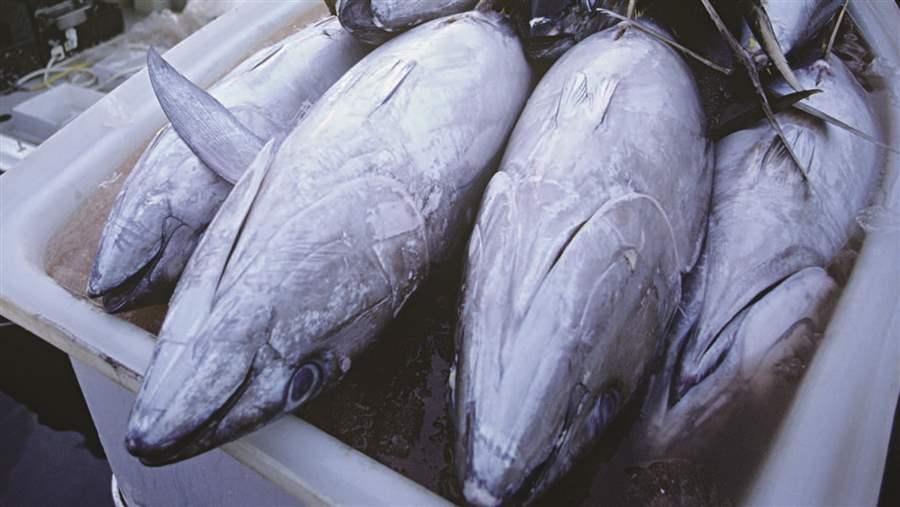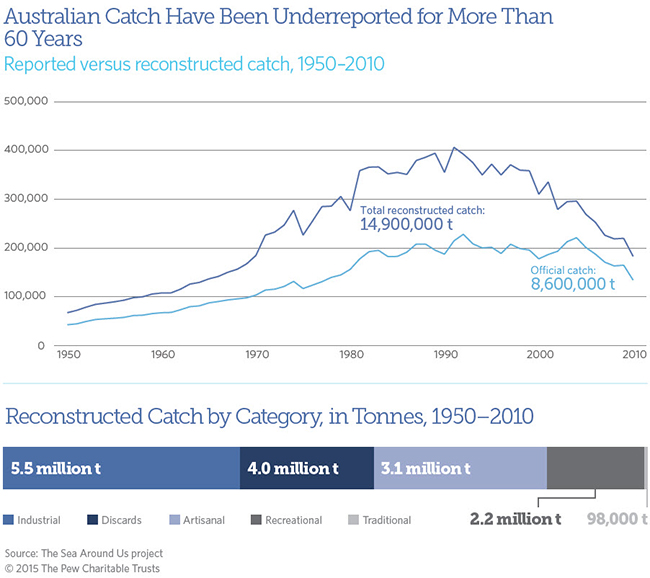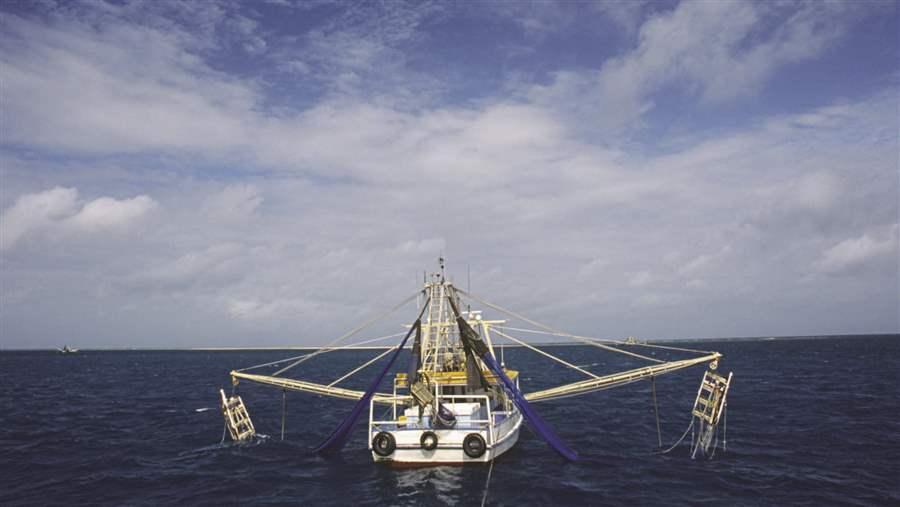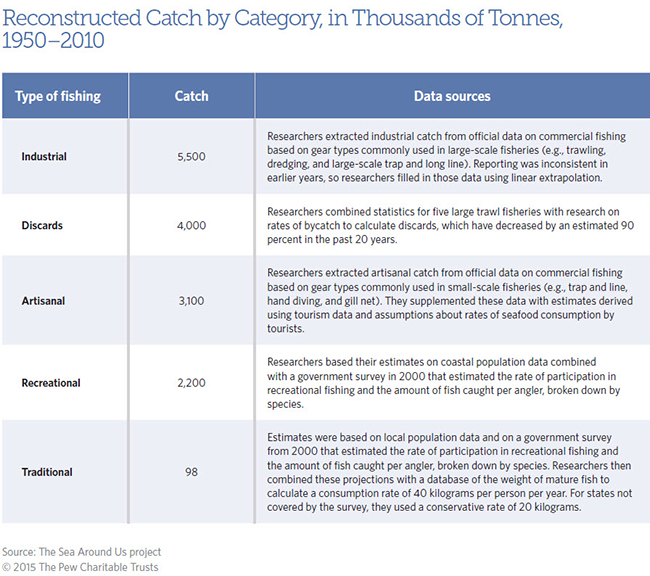Australia Catch Reconstruction
Australia has generally robust fisheries management, but it does not account for all the fish and shellfish taken from its waters. A process known as “catch reconstruction” helps to fill these gaps by collecting information on catch from a variety of sources, including academic literature, industrial fishing statistics, local expert interviews, and other accounts and records. This fact sheet presents estimates (Kleisner et al., 2015) of total catches from 1950 to 2010, including recreational and traditional (i.e., fishing by local indigenous communities) catch, which has been neglected in official accounting. Total catches appear relatively sustainable given the size of Australia’s ocean area, and discards have declined.
 © Shutterstock
© ShutterstockTuna at the port in Cairns, Australia. Most countries focus their data collection on industrial fishing, in part because small-scale operations can be difficult to track.

 © Shutterstock
© ShutterstockPrawn fishing trawler in the Gulf of Carpentaria, Australia. Catch reconstruction is a promising approach to better capture the scale of fishing.

Reference
K. Kleisner, C. Brennan, A. Garland, S. Lingard, S. Tracey, P. Sahlqvist, A. Tsolos, D. Pauly, and D. Zeller, Australia: Reconstructing Estimates of Total Fisheries Removal, 1950-2010 (Vancouver: University of British Columbia, 2015), Fisheries Centre working paper No. 2015-02, http://www.seaaroundus.org/about/index.php/working-papers.






